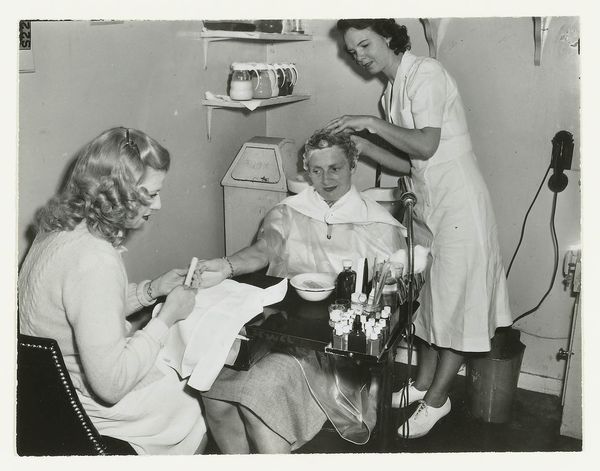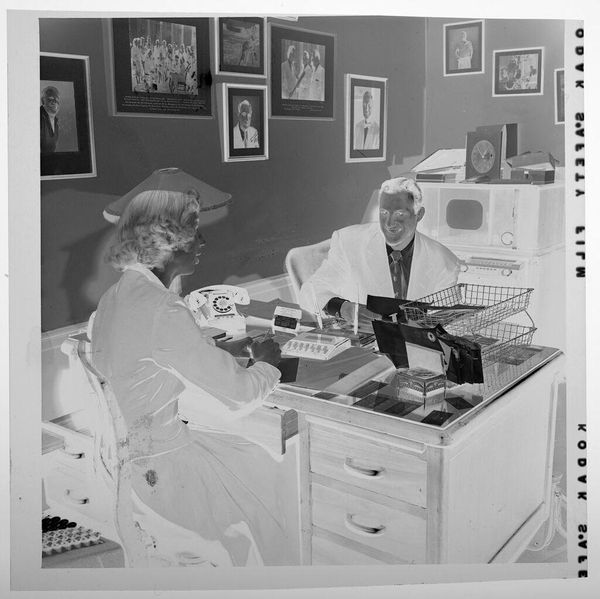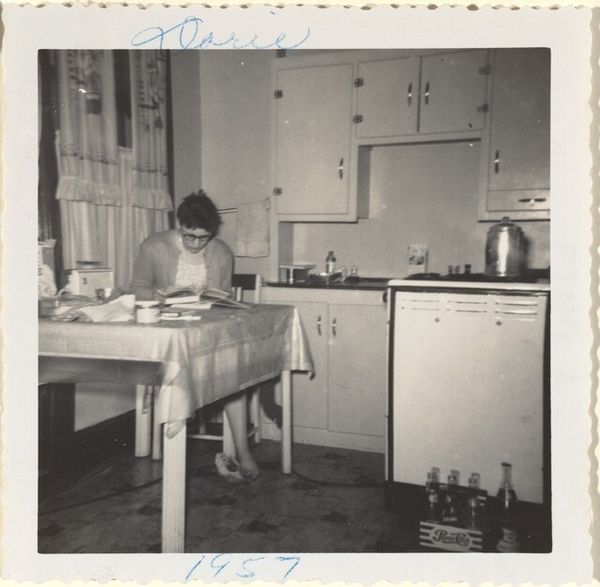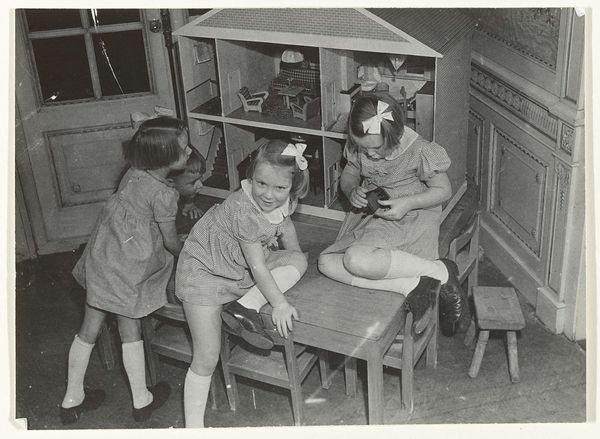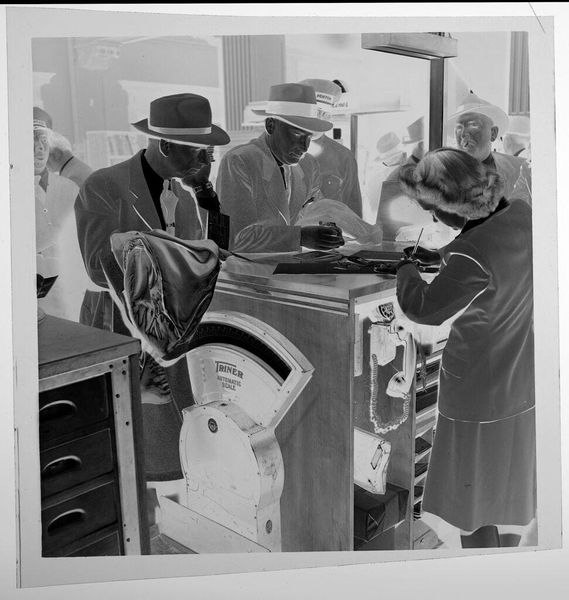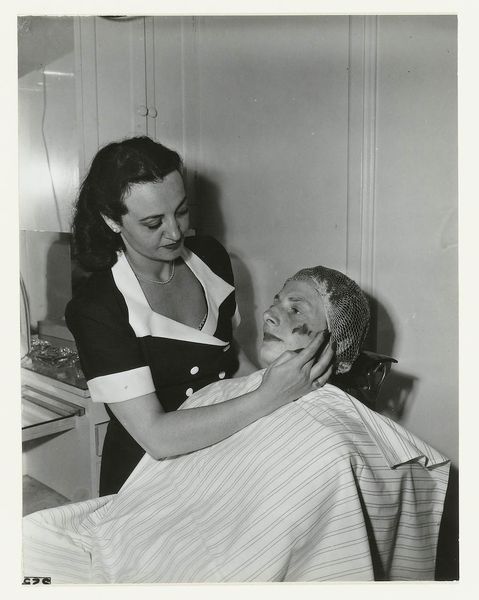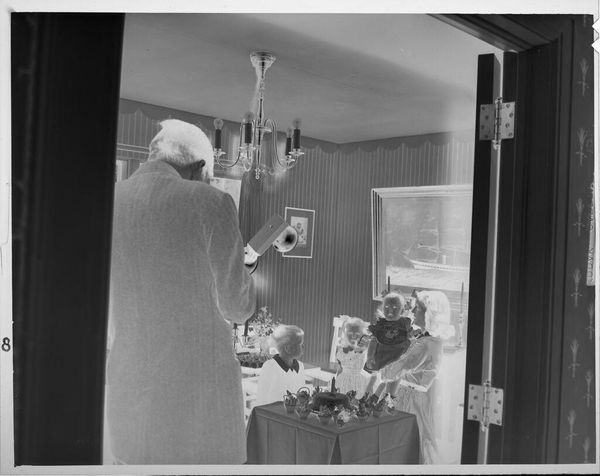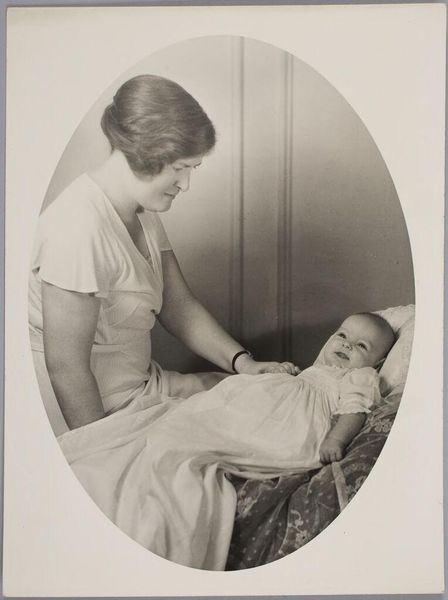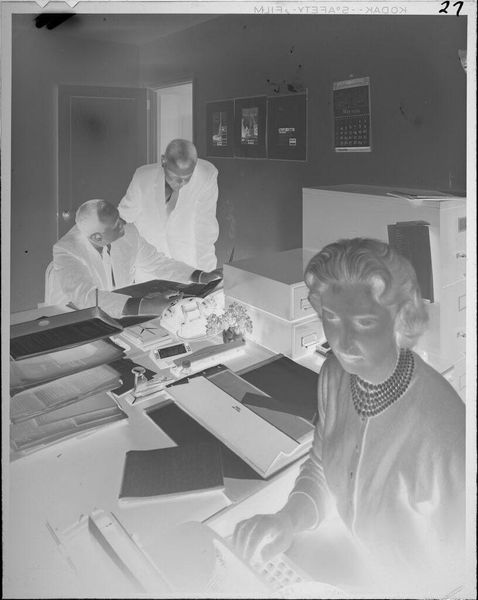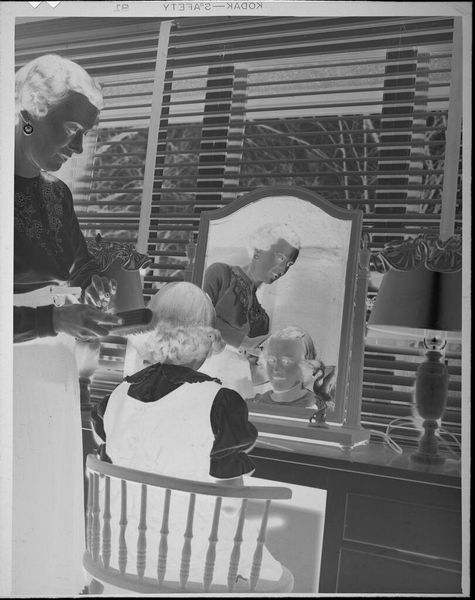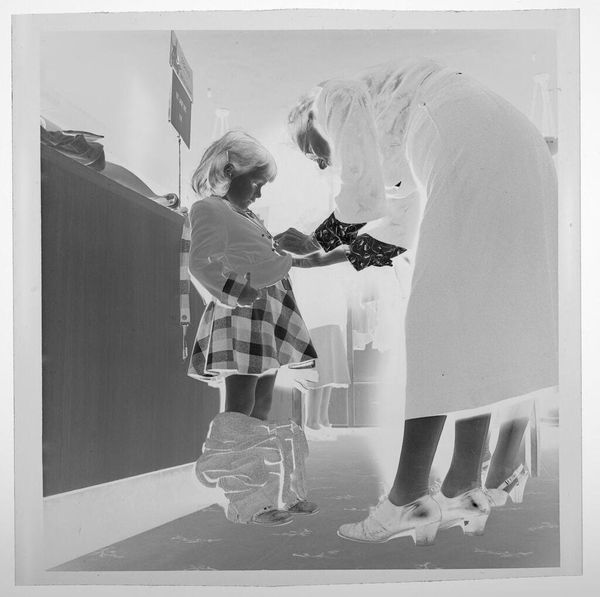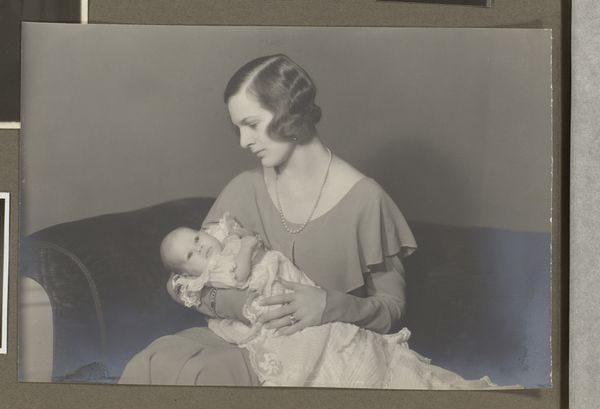
photography, gelatin-silver-print
#
portrait
#
print photography
#
photography
#
black and white
#
gelatin-silver-print
#
realism
Dimensions: width 9 cm, height 12 cm
Copyright: Rijks Museum: Open Domain
Curator: Here we have an intriguing gelatin-silver print, possibly from 1949, entitled "Fanny ligt languit in stoel voor haarwasbeurt," or, "Fanny reclines in a chair for a hair wash." Editor: The strong contrast immediately grabs me. It's a striking image, mostly the way the various shades of gray work against the stark white uniform and plastic cape, setting a rather intimate and somber mood. Curator: Yes, and consider the implications of the anonymous authorship; it throws the image open to diverse readings around gendered labour and the female gaze in post-war society. How might the power dynamic of a beauty salon manifest class differences, even intimacies, under consumer capitalism? Editor: The formal composition draws the eye across the frame. Notice the repetition of circular forms—the bottles on the shelves, Fanny’s reclining head, the lamps overhead. Each form is clearly rendered, defined in relation to the planes beside them. It creates a visual rhythm that is quite compelling. Curator: Absolutely, and thinking about realism as a style: to what extent does the starkness of this realism reflect the economic austerity of post-war life for many women, vis-a-vis an industry dedicated to escapism? Editor: From a purely compositional view, I am struck by how the bright apron reflects and diffuses light to the whole form, how this creates tension when viewed in tandem with other shapes on the horizontal plane. Curator: Thinking of this ‘Fanny’ character, how do various systems of beauty become internalized as personal discipline for women, for self-expression, but perhaps simultaneously oppressive under male expectations? Editor: Those light patterns are beautiful in that apron, reflecting what is almost an inverted, more luminous vision. In short, I just find that interesting. Curator: It is, and with respect to such quietness—such labor--one almost sees the weight of the world’s pressures made visible in the service. It allows an artwork to not simply function on surface levels but instead engages the viewers in more personal thoughts about larger questions related the cultural constructions around the self. Editor: I appreciate seeing how we can observe an artwork to address its more theoretical possibilities when accounting for both the shapes and history it uses to formulate them.
Comments
No comments
Be the first to comment and join the conversation on the ultimate creative platform.
